Every pyramid needs a top, and the capstone of manual-transmission wagons that were sold new in North America is this unlikely beast. Cadillac built just under 1800 CTS-V wagons, and only 514 were manuals. The 6.2-liter supercharged V-8 advertised 556 hp; Recaro front buckets and a limited-slip diff were among the available options. Magnetic ride control and six-piston Brembo calipers were standard. RWD allowed for some truly epic smoky burnouts for those so inclined. 0–60 mph came up in just over 4 seconds. Prices are a little hard to peg because the number of transactions is small, but the lowest-mileage cars can certainly crack $100,000. Even that price seems like a bargain for a very special car, one with the fingerprints of “Maximum” Bob Lutz all over it.
10 modern manual wagons collectors should watch

Anyone paying even the slightest attention to the automotive world realizes that the station wagon is the automotive equivalent of what paleontologists refer to as a “dead clade walking.” Taken from the film Dead Man Walking, the term refers to groups of animals that barely survive an extinction event; instead, they linger for a bit and then finally die out.
The mainstream abandoned wagons for SUVs decades ago, but a small subset of enthusiasts recognize them for what they are—cars as rewarding to drive as their sedan counterparts, with some added practicality. The cognoscenti refer to them as long-roofs, hipster short-form to distinguish them from their grandparents’ Colony Parks and Country Squires. The holy grail is a manual-transmission long-roof.
Here’s a quick rundown of what’s out there from the last 25 years, with some purely subjective ratings.
1999–2004 BMW E46 and 2005–11 E90 Touring

Fun to drive: 5 / 5
Reliability and maintenance expense: 3.5 / 5
Pros: Safe, solid, sporty, and handsome
Cons: With BMW parts prices, minor irritations can add up quickly.
BMW was somewhat late to the game in offering wagons in the United States. Mercedes had been doing so with regularity since the 1970s, but it wasn’t until the early ’90s that BMW decided to offer the E34 5 Series Touring (or wagon, in BMW-speak) in the states. By the time the car’s successor—the very pretty E39—was introduced, manual transmissions had become almost mythical in the RWD-only 5 Series. The 3 Series was the real sweet spot for BMW wagons in the U.S. market. The E46 generation (1998–2005) was the first officially offered here (there are many gray-market E30 and E36 wagons in the U.S. and almost all are manuals). Sold in six-cylinder 323i and 325i form in either RWD or AWD, these are great and highly sought-after cars that will do 300,000-plus miles with the usual BMW maintenance to things like seals, axle shafts, cooling systems, and power windows.
The car’s successor, the E90/E91 (2006–13) was equally desirable, with added refinement and power. Many of the pain points are the same, with the addition of a failure-prone electric water pump. Expect to pay anywhere from $15,000 to $25,000 for a manual depending on miles, condition, and options. Rear-drive cars are prized for their lightness and simplicity and carry a slight premium in warm climates. A good E46 or E90/E91 is probably the gold standard for European performance wagons, both in driving enjoyment and reliability.
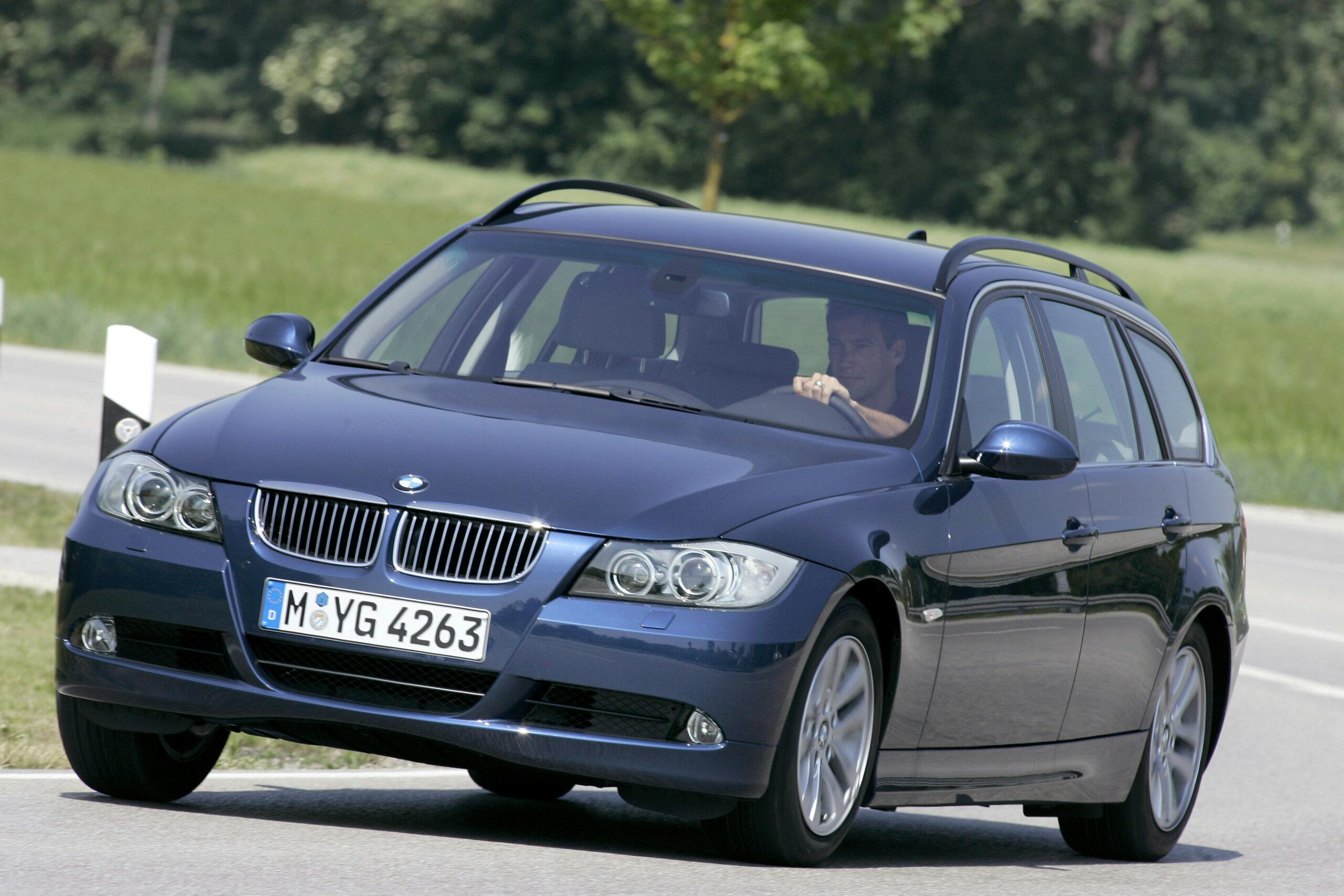
2003–08 Mazda 6 Sport Wagon and 2002–03 Protégé 5

Fun to drive: 3 /5
Reliability and maintenance expense: 4 / 5
Pros: Fun to drive; relatively inexpensive parts and maintenance
Cons: FWD only; horribly rust-prone; lack the safety of Euro wagons
Maybe the most overlooked manual-transmission wagon is the 2002–08, or first-generation (GG1), Mazda 6. While it takes a knock for being FWD-only, the long-roof 6, dubbed the Sport Wagon, was offered with a five-speed manual, most commonly paired with a Ford-supplied Duratec 3.0-liter V-6. It wasn’t a bad setup and made 204 horsepower. Sadly, there was no Mazdaspeed 6 wagon. The vehicle was handsome, reliable, and a decent performer, but outside of the West Coast, they’re getting very hard to find today.
The same can be said for the other Mazda manual wagon, the Protégé 5. Based on the entertainingly simple Protégé sedan, the 5 wasn’t your average hatch, but a small wagon, almost unique in the marketplace in the early aughts, and certainly extinct now. Back in 2001, Car and Driver called its driving dynamics “scintillating” and said that the car had real personality: “Cheeky. Insolent. Pert.” Like the 6, the Protégé 5 seems to hold up well mechanically, and 200,000 miles doesn’t seem uncommon for West Coast cars that haven’t succumbed to body rust. Even though the price delta between the two models was significant when new, nice examples of either the 6 or the Protégé 5 seem to trade in the $6000 to $7000 range.

2009–19 VW Jetta/Golf SportWagen

Fun to drive: 3.5 / 5
Reliability and maintenance expense: 3 / 5
Pros: The newest cars on the list, some of which are still under an impressively long 6-year/72,000-mile post-Dieselgate warranty
Cons: Somewhat underpowered, irrespective of model; the usual Volkswagen quality issues.
Modern VW wagon offerings in the U.S. consist of the Passat, Jetta, and Golf. Manual Passats ended with the B5 generation (1997–2004). The 1.8 Turbo and VR6 cars both came with five-speed manuals, as did the TDI. The oldest are now approaching 30 years old, and consequently, most B5 Passats are worn-out bags of trouble. And as tempting as the unicorn status of a 275-hp, 4Motion (AWD) Passat W8 manual wagon might be, (about 100 were sold in the U.S.), the maintenance hassles of daily-driving a VW this old and complex are way too daunting. A Mk 4 Jetta VR6 manual wagon was a sweet little ride, but they’re mostly gone, too, and I haven’t seen one in at least a decade.
The consolation prize is the fact that late-model Jetta/Golf SportWagens are quite decent cars, and not uncommon with manual transmissions. The most desirable is probably the last of the line—the AWD Golf Alltrack wagon, which was discontinued after the 2019 model year. Manual-transmission Alltracks are still worth close to their original MSRP, in the mid-to-high twenties.
2008–12 Audi A4 Avant
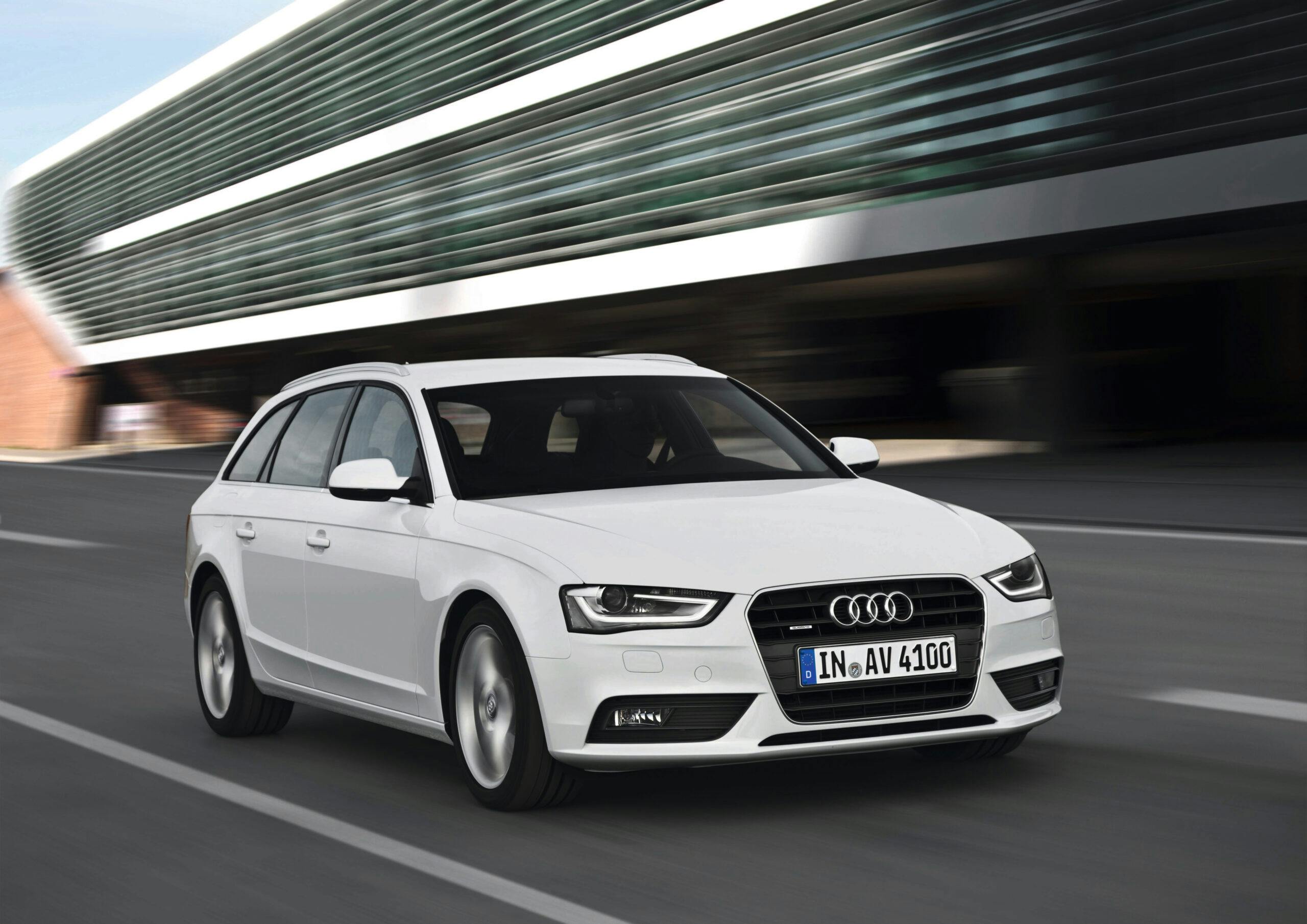
Fun to drive: 4/ 5
Reliability and maintenance expense: 1 / 5
Pros: Beautiful inside and out, excellent driving dynamics
Cons: Abysmal reliability record
Audi has a long history of building sporty wagons with manual transmissions. The 100 (5000) based cars from the 1980s were all equipped with manuals if you opted for the Quattro AWD system. And let’s not forget the Porsche-engineered-and-assembled RS2. These days it’s a blue-chip, $75,000-plus collectible.
The B8 A4 Avant was the last Audi wagon to offer a manual transmission in the U.S. They’re gorgeous inside and out, and lovely to drive, albeit quite scarce with a manual. But having personally known two people whose 2.0L turbo A4s have suffered catastrophic, post-warranty engine failures, and one other whose 50,000-mile car had a quart-every-600-miles oil habit, it’s hard to recommend an A4 to anyone in good conscience.
2003–07 Volvo V70 R
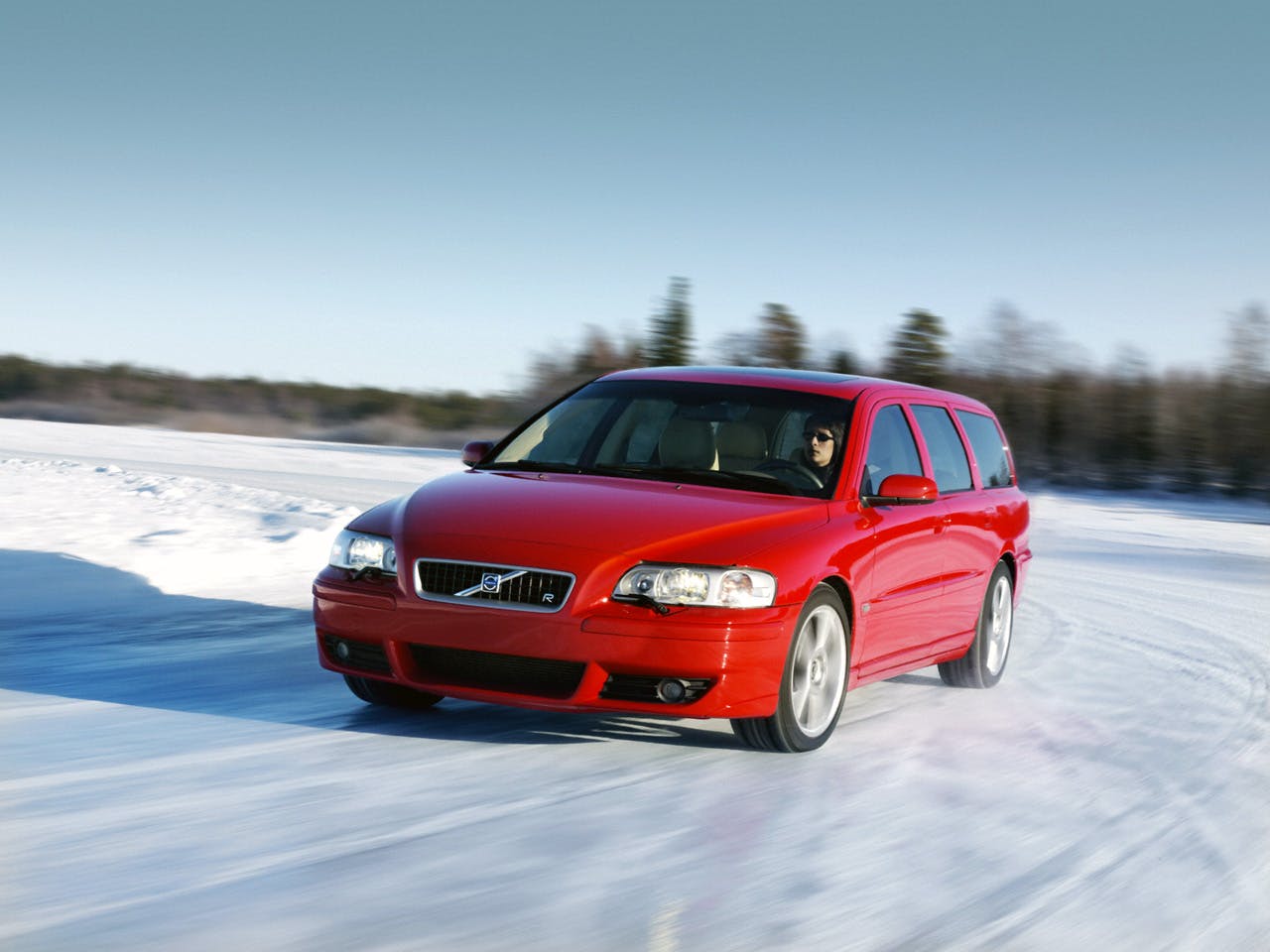
Fun to drive: 5 / 5
Reliability and maintenance expense: 2.5 / 5
Pros: Handsome; insane inline-five turbo engine
Cons: Pricey parts and service
For most of its history in the U.S. prior to the early aughts, Volvo offered a manual-transmission wagon. Outside of one of Paul Newman’s V-8–swapped 740 wagons, the holy grail is almost certainly the P2-generation V70 R wagon. Its maniacal turbocharged inline-5 made almost 300 hp, and while RWD would have been a hoot, the car was offered only in AWD form. Six-speed manuals were rare, and those who opted for this were treated to one of the most artfully designed shifters outside of a gated Ferrari box. Well on their way to being full-fledged collectibles, cars with average miles are mid-teens, and the best, low-mileage cars can break $30,000. A small price to pay for what might be one of the greatest manual-transmission wagons ever.
2005–07 Subaru Legacy 2.5 GT Wagon
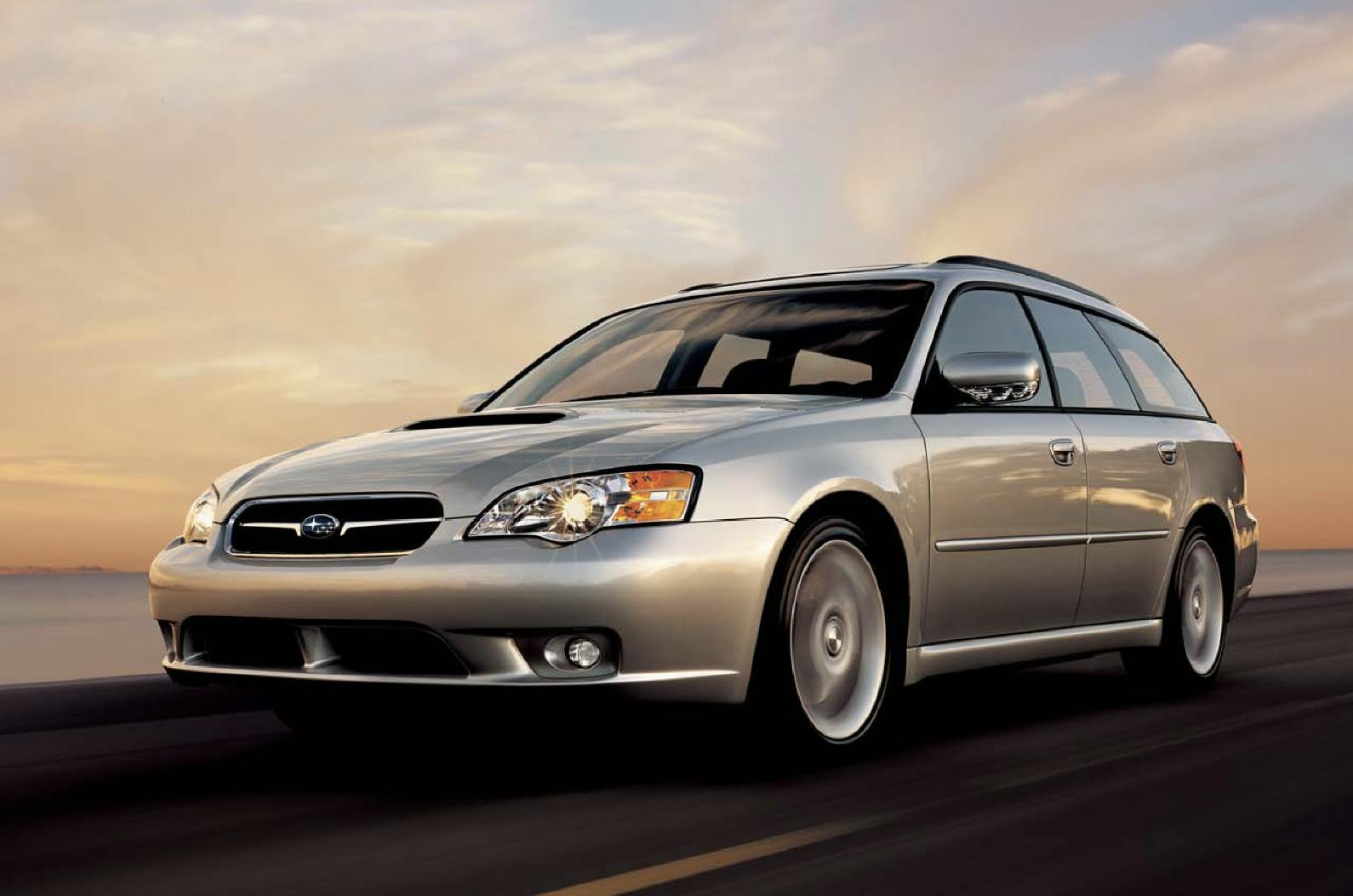
Fun to drive: 5 / 5
Reliability and maintenance expense: 3 / 5
Pros: WRX style, power, and grip; infinitely modifiable
Cons: The usual Subie flat-four head gasket issues every 90,000 miles or so
In the early aughts, the non-Birkenstock wearers in Subie showrooms were drooling over the WRX. You could excuse them for overlooking its more practical sibling, the Legacy 2.5 GT Wagon. With AWD and the same 250-hp 2.5-liter turbo flat-four as the WRX, a five-speed Legacy GT wagon is truly something special. Although it’s the same body as the far more common Outback—albeit with a functional hood scoop, shorn of body cladding, and riding far lower—the Legacy GT Wagon was actually quite handsome. Since one of these is just as tunable as the WRX, finding a stock, manual-gearbox model with low miles is nearly impossible, but the market has yet to catch on to how special these cars are. About $15,000 or so buys a nice one.
2004–11 Saab 9-3 SportCombi
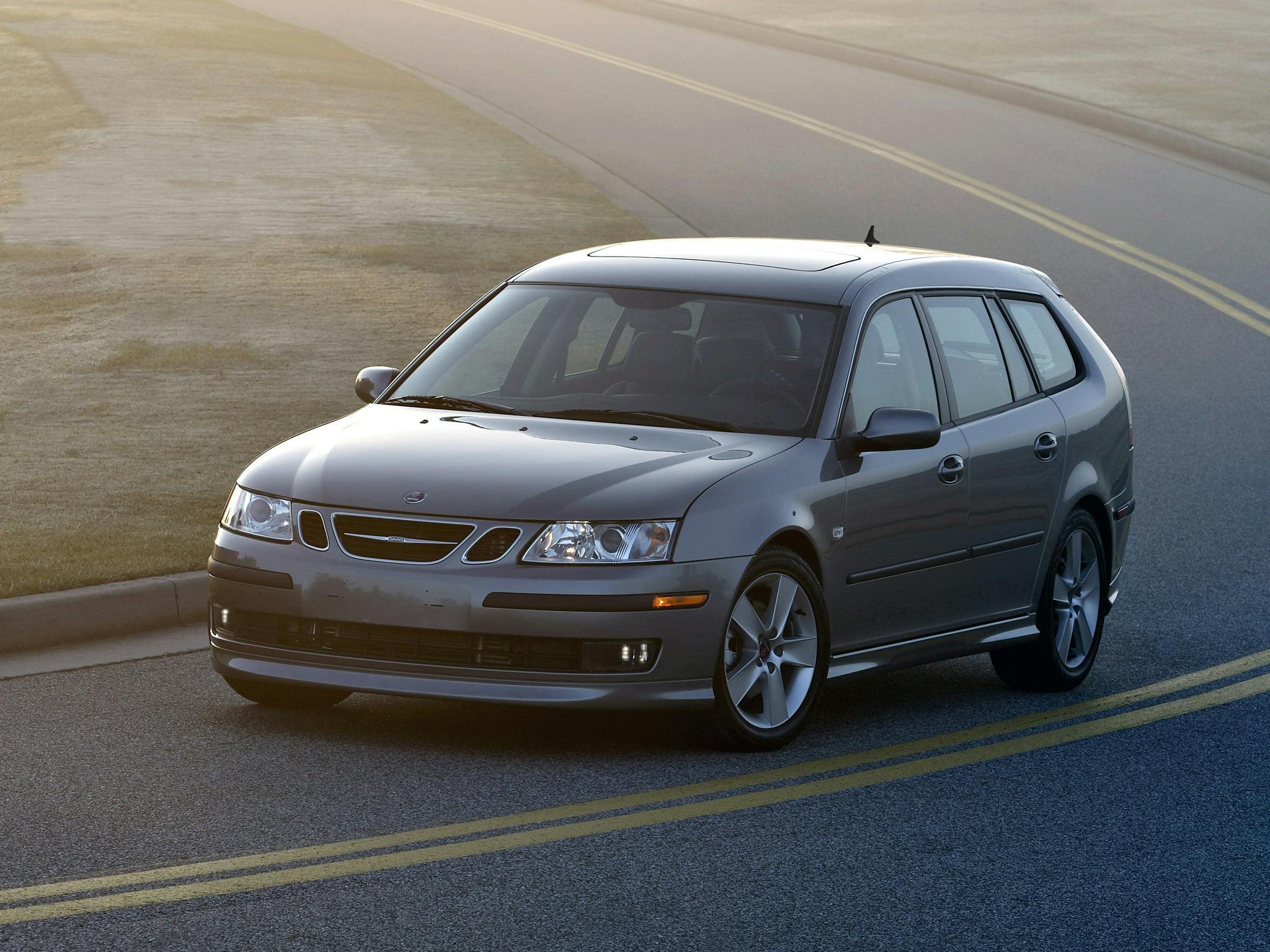
Fun to drive: 3 / 5
Reliability and maintenance expense: 4 / 5
Pros: Quirky looks, nicely appointed inside, GM serviceability, bargain prices
Cons: Orphan status and uncertain support going forward
Saab offered wagons in the U.S. off and on for about four decades, but the only one it sold in volume was the 9-5. Top spec 9-5 Aero wagons with a five-speed are quite rare, and the few good ones that remain generally have asking prices in the ten-grand range. Most, however, are 200,000-mile examples with asks of about half that. Perhaps more interesting, though, is the last-generation 9-3 Combi. Sadly, GM had actually started to do some OK things at Saab right around the time the wheels fell off the Swedish brand. The last generation of the 9-3 and 9-5 were pretty solid, but only the GM Epsilon-based 9-3 was offered as a wagon. As you may have noticed, nearly every Euro brand has to have a clever name for “wagon.” Saab’s, unsurprisingly, was the oddest: “Combi” is Saab for wagon. And quite a decent wagon it was. With its vertical taillights and upswept profile, it was quirky like a Saab should be, and nicely appointed inside.
The 9-3’s 2.0-liter turbo GM Ecotec four managed a wholly adequate 210 hp. Most were FWD, but somewhere around 10 to 20 percent of them were ordered with AWD. Saab called this model the SportCombi X. The manual version of this car is the true 9-3 wagon unicorn. The final version of the 9-3 racked up a reasonable reputation for reliability and maintenance costs. This is backed up by the fact that most of the cars you’ll see advertised have between 150,000 and 225,000 miles on them. FWD manual 9-3 wagons with under 100,000 miles are around $9000 or so. A similar manual 9-3X might bring around $13,000 to $15,000, if it’s really nice. The largely unfounded concerns about parts seem to be keeping Saab values down.
2011–13 Cadillac CTS-V Wagon
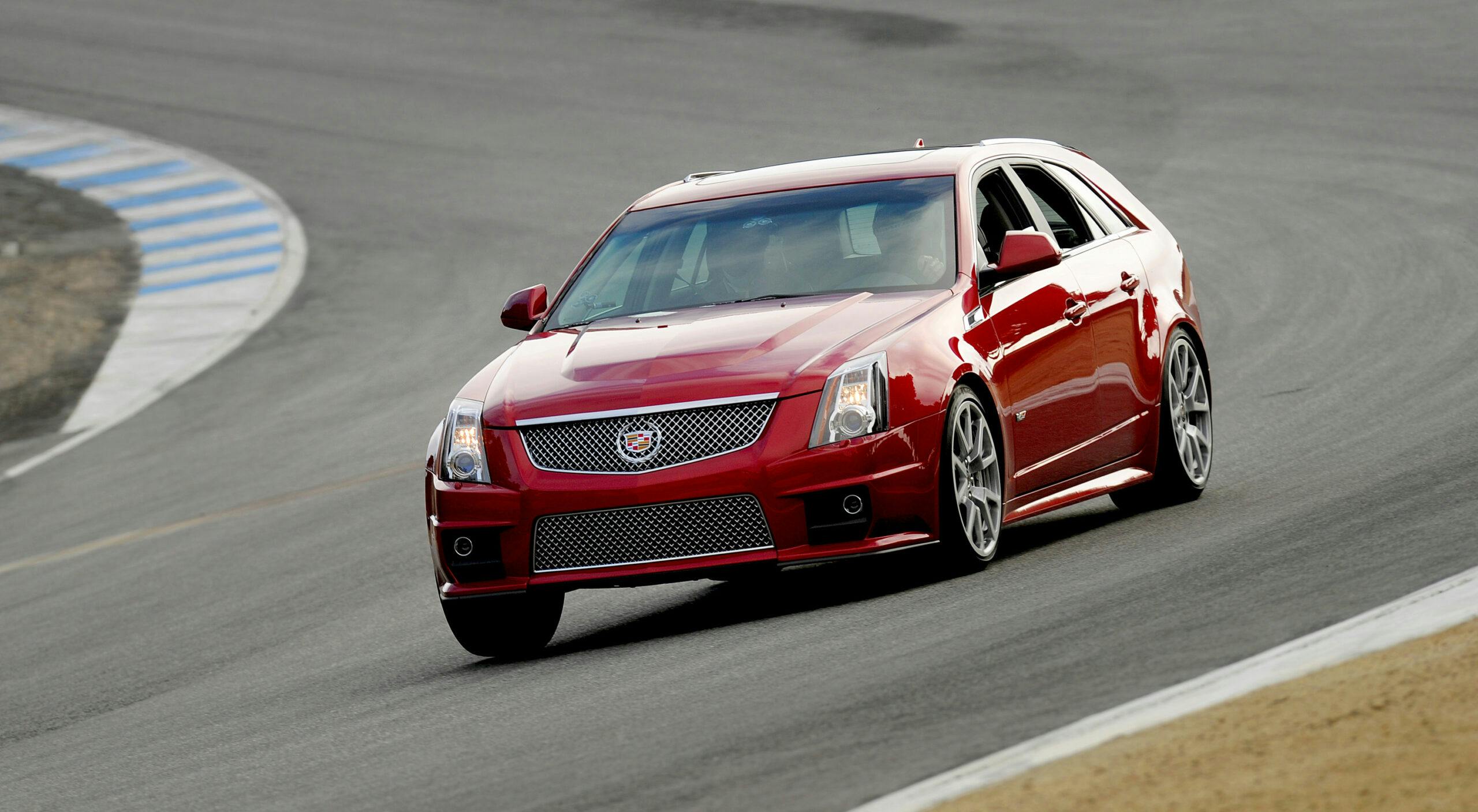
Fun to drive: 5 / 5
Reliability and maintenance expense: 4 / 5
Pros: Insane power and acceleration with braking and chassis to match; wicked good looks
Cons: Six-figure price, rarity
***
Check out the Hagerty Media homepage so you don’t miss a single story, or better yet, bookmark it. To get our best stories delivered right to your inbox, subscribe to our newsletters.


I tried the past 3 years to obtain 100 goodie bags, from your Marketing Dept, for a Labor Day Car Show and never received a response…either positive or negative. Do you support such events?
Thanks,
Reed Brown
STILL NO RESPONSE ?
They are all out planting tree to off-set our carbon footprint!
Why ask this in a public forum and not directly?
It’s the passive-aggressive approach.
The CTSV is the king of all wagons. I just found one the other day for sale. 30K Miles and they wanted $99K for it. The car sold the next day. It was a rare Manual.
One I would like to add here is the HHR SS. I owned one for 10 years. I am not an HHR fan, I hated turbo engines and I really hate FWD but this car was a real joy to drive.
I added the GM tune kit so I was right at 300 HP in a vehicle that was around 3000 pounds. It would run 13’s all day and a top speed over 160 mph.
It was tuned by John Heinracy and his team at GM performance and did hold the record for its class at the ring. It was only a couple seconds slower than the Camaro SS.
The HHR SS is a good add! I believe Chevrolet also offered the panel version in an SS around 2009.
They offered a panel and half panel.
With he GM tune on mine the LNF turbo was turning 23 PSI of boost. A very good engine. It just needed RWD.
The No Lift Shift was something you had to get use to.
Saw a manual CTS-V for sale on Charlotte, NC Craigslist today. 80K miles – Asking $79k.
Purchased a 2019 Alltrack a year ago with 26K miles and indeed the extended warranty factored into my decision. Currently at 42K miles so I have 30K miles left on the warranty. We shall see how it goes long term! But for now I love the thing. And, yes, it has the manual.
The V Wagons had collector written all over them from new. Coulda bought then–shoulda! The 05 V I had previously and all the issues with it scared me away. None of them involved the motor but all electrics and drivetrain past it. Was a lot of fun when it was not in the dealer (who did not know how to fix it)
I’ll still take my Dodge Magnum over any of these.
Unfortunately the magnum was never available in manual – if it was, it would have absolutely been the top of this list.
Anyone for a Holden Commodore SS wagon in manual?
How did the Magnum slip by the list?
Because it is automatic only.
I wonder where they all went. When the Magnum was still on sale these things were all over the place. I can’t recall the last one I saw.
Best station wagon by far, with a choice. Mercedes C or E Class with the 6.3 Engine.
Not available in a manual.
I’d rather drive my 1963 Country Sedan wagon, 4.6 DOHC, Tremec 5 speed, 4 barrel Holley, 3.7:1 nine inch ford rear end. or my 1990 Ford LTD Crown Victoria wagon, roller block 5.0, 4 barrel carb, T5 5 speed, with 3.55:1 gears. all these cars shown look ugly to me.
Agreed; I wouldn’t trade my ‘63 390 Super Marauder with a factory 4-speed for any of these! An added bonus is that it is a true piece of automotive art❤️
BTW; it’s a 9 passenger Colony Park Wagon…
wow, Thats a great car ! There’s a guy that lives close to me here in Indiana with a bunch of 60’s stuff, galaxies, mercs, and I have never stopped by to see him, but he’s not home much from what I hear.
I also have a 1963 Country Squire. It is a 9 pass with the factory bucket seat option. I would love to install a manual transmission however that might change the value but it would be way to much fun to drive. Maybe??
yes, you should do it . Just retain the parts incase you ever want to sell, or change it back.
I had a 2005 Legacy GT Wagon and I loved it and I miss it. I considered a CTS-V Wagon but I could never find what I wanted and now they cost too much.
How do you leave the E39/E61 wagons from BMW off this list?
The BMW wagons are in the article, including the E39 specifically.
The article states “By the time the car’s successor—the very pretty E39—was introduced, manual transmissions had become almost mythical in the RWD-only 5 Series”
I was perplexed by this claim; when I bought my manual E61 a few years ago, I had my pick from a good half dozen, and continued to see them come up for sale in the area. Lately I cannot find any at all though, has me thinking, did this suddenly morph into a unicorn?!
The Saab 9-3 combi had more variants than just the 2.0T with manual–the Aero combis (FWD, Holden-made 2.8T V6/250 hp) were fast and could be tuned/modded for serious output. The TurboX sport combi (2.8T/Haldex AWD) was an extremely rare manual transmission wagon–approximately 50 MT TurboX wagons made it to the US market. The six-speed gearbox was also available on the 9-3X (slightly lifted, 2.0T, AWD) until nearly the end. I waited two years for the folks I bought my manual 9-3 wagon from to finally relent and sell it to me. It still gets looks from people asking me if Saab came back and started making new 9-3 wagons… I wish that were the case.
No love for the 2001 – 2004 Audi A6 Allroad with the 6-speed manual? Mine has 310k miles on the original clutch.
Or the 1992-1995.5 Audi S4/S6 wagons – 5 cyl turbo – manual only. Came out with 229hp and easily modded to 370hp.
Having owned a Mazdaspeed 6 and a Mazda 6 wagon, I can tell you I am very happy that Mazda did not give the wagon the Mazdaspeed treatment. I tend to buy and hold, but the Mazdaspeed was dumped after just over 4 years. It was a nice car aside from a turbo that lost it seals, front CV joints that failed early and a rear end that was ready to tear out its mounts.
On the other hand, the wagon has been a relatively low maintenance vehicle for the 16 years we have owned it. A few years ago it was demoted from daily driver to my tool hauler, a job it does very well. For collectability? No way. The exterior plastic wasn’t very good quality. One roof rail cover gave up after couple of years, and the replacement didn’t last either. The rubber seals at the windows could have been better, too. On the other hand, as long as the car stays running, I will certainly enjoy driving it. It has a nice ride. It can get out of its own way easily, and I enjoy it on twisty roads, too. The one drawback is that the turning radius is bigger than it should be.
In good conscience how can you recommend any vehicle, especially German, with poor reliability records and expensive parts/repair costs! Are they really that fun to drive to the repair shop?
It’s more profitable to insure expensive cars that don’t go out in traffic? (Sorry, couldn’t resist).
Because the intended audience knows what they are getting into and also, having owned German cars for the last 30+ years they don’t age badly; not Honda/Toyota, but as good as or better than any domestic we have had. Then again, I drove a Range Rover, so maybe my tolerance for mechanical and electrical idiosyncrasies is a bit high 🙂 (kidding… they have mostly been good also)
The B7 Audi S4 Avant would have been a better choice for this line up. Loved our 2007 S4 wagon, V8 6spd AWD, very fun rare car. Yeah yeah I know….timing chains.
Excellent list, Rob. I would like to add one, maybe with the added asterisk that you might want to make a change or two… Just before my son was born late in ’95, I sold my peppy little 5-speed ’90 Civic hatchback to preserve our backs from lifting a baby seat into and out of the back seat thru its one-per-side doorways. We replaced it with an AWD ’95 Legacy Wagon with a 5-speed tranny. It was the perfect car for a young family: handled great, good mileage, practical, roomy, and better winter traction than many Jeeps (there’s a story in there where a young mother with kid in booster seat passes a stuck Wrangler on a hill, ha-ha). Only problem is the 2.2L was slow. A year or so later I was hanging a pair of Hella driving lamps while it was up on a rack and noticed how easy it would be to hang a turbo or two. I mentioned this when returning her car that night. She knew well my tendency to continue adding upgrades to a car till it was no longer really usable as a normal car, so she swore she would never drive it again if I did…
When we sold the still “mostly” stock Legacy eight years later, we replaced it with a longroof (see, I’m still hip) that did make your list – a 2003 Protege5. That one definitely deserves its spot on your list! It was pretty much everything the Subie was, plus even better handling and much more pep. It even came stock with a front strut brace! (that you must remove to replace the battery) Drove that till somebody decided to total it for us and replaced it with a MINI. Thanks for a fun read.